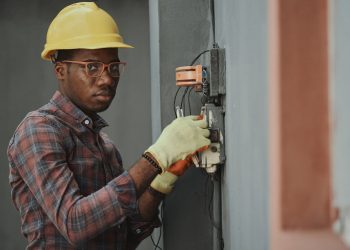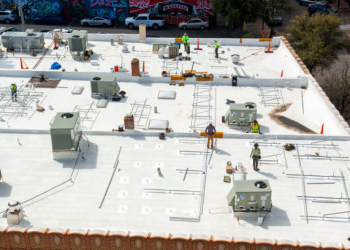Table of Contents
The old adage goes, “never pay someone to do what you can do yourself,” or something like that. It doesn’t matter that the exact verbiage might not be correct because whoever said it was clearly more prideful and less sensible than what was good for them.
Don’t get this twisted: there are certainly do-it-yourself projects that you can and should do yourself, like power washing your home, maintaining your lawn, or even more complicated projects such as cabinet installation. Paying a professional to do what you can do yourself is needlessly redundant and also leaves you with less money in the budget to hire a contractor for something more complex, like pest control, electrical wiring, or foundation issues.
However, especially if you have some DIY knowledge, the line between what you can do and what you should do can appear blurry. While there’s no way to account for knowledge that you may have, and you should treat that line as flexible, this guide aims to illustrate specific instances when pluck and a seat-of-your-pants approach will more likely result in you burning your house down than a successful home renovation. Not everything on this list will account for serious dangers to health or property, as sometimes you just want a professional to do a job right the first time that you would have to re-do repeatedly, like a house painting contractor, for example.
If you fear that your experience is lacking in general, even for something you feel like you should be able to do yourself, there’s no shame in hiring a professional who will perform high-quality services.
With all of that said, here are a few instances where you should probably call a contractor instead of trying to do it yourself.
Asbestos or Other Harmful Materials
Chances are, you don’t have the equipment on hand to successfully remove asbestos or other harmful materials from your home without inflicting serious harm on yourself. And you absolutely shouldn’t try: the moment you suspect that there may be asbestos, black mold, or something else that’s widely known to cause serious health issues in your home, give a professional a call: they have the equipment on hand to avoid being seriously harmed in the process, and they can remove the harmful material efficiently without spreading it throughout your home.
Plumbing, Electricity or Gas Issues
Aside from working with these materials being inherently dangerous and potentially causing serious health or structural damage if you mess it up, you might actually need to have permission from your state to work with these materials. These are the kinds of jobs you want done right the first time, and an inexperienced hand can cause irreparable damage to your home: make sure you do thorough research on the company you hire to take care of these issues, but never attempt them yourself. A good general rule for any project that you may be considering doing yourself is that if messing up will cause serious injury or property damage, you might want to pass the buck to a professional: you’ll thank yourself later.
Demolition of Any Kind
Picture this: you decide that you want an open floor plan, but the person who designed the house you’re living in decided to make it more akin to a Greek labyrinth instead, small hallways and needlessly-enclosed rooms making you feel claustrophobic. You consult the blueprints for your home, and decide that you can take out an offending wall yourself, and you swing your sledgehammer with all your might: only to realize you’ve hit a load-bearing pillar. You hear it crack, and almost comically, you let out a small “Uh oh” before the house falls down on top of you.
That’s not really how it works, but you get the idea. Demolition has to be done carefully, targeting specific areas safely, making allowances for possible safety risks, and likely requiring permits. Improper demolition can cause serious structural issues that may make themselves manifest later. Even if you think you can demolish it yourself, call a professional instead.
Common sense will be your North Star in deciding whether to call a professional or handle a project yourself. When dealing with potentially dangerous operations or materials, instead of pushing yourself towards a massive, steep learning curve, take the leap and involve someone with the experience to do the job correctly.








